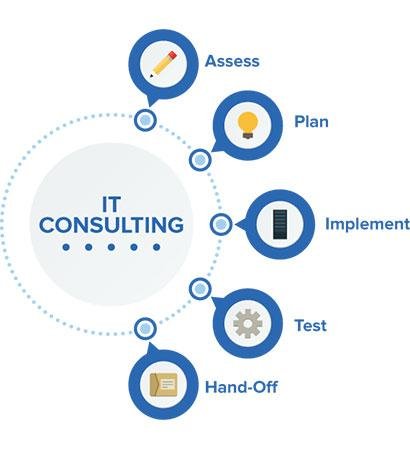
Digital transformation is no longer a luxury; it is essential for businesses to thrive in the fast-paced and constantly evolving global economy. By integrating digital technologies into every aspect of operations, organizations can enhance efficiency, improve customer experiences, and unlock new opportunities. This article delves into the transformative power of digital solutions, offering actionable insights and strategies for achieving successful digital transformation.
1. What is Digital Transformation?
Digital transformation refers to the integration of technology into all areas of a business to fundamentally change how it operates and delivers value to customers. It involves adopting digital tools, automating processes, and fostering a culture of innovation and adaptability.
Why It Matters:
Digital transformation helps businesses remain competitive in a technology-driven world by enabling them to meet evolving customer demands, streamline operations, and innovate faster. It’s a holistic approach that empowers organizations to stay relevant and create sustainable growth.
2. The Benefits of Digital Transformation
Digital transformation goes beyond technology upgrades; it’s about reimagining how businesses operate and deliver value. It brings numerous benefits that can position organizations for long-term success.
Key Benefits:
- Increased Efficiency: Automation reduces repetitive tasks, accelerates workflows, and optimizes resource allocation, freeing employees to focus on strategic goals.
- Better Insights: Advanced analytics and big data tools allow organizations to gather, analyze, and act on real-time information for informed decision-making.
- Enhanced Customer Experiences: Personalization tools and digital platforms improve customer satisfaction by delivering tailored, user-centric services and interactions.
Why It Matters:
Embracing digital tools creates operational resilience, improves decision-making, and enhances the customer journey, helping businesses establish themselves as market leaders.
3. Core Pillars of Digital Transformation
A successful digital transformation strategy revolves around key foundational pillars that guide its execution and outcomes.
Key Pillars:
- Technology Adoption: Leveraging advanced technologies such as artificial intelligence (AI), the Internet of Things (IoT), and cloud computing to innovate and optimize operations.
- Cultural Change: Shifting organizational culture to embrace innovation, collaboration, and agility while empowering employees with the right tools and knowledge.
- Customer-Centricity: Designing services and products around user needs and continuously improving based on feedback and behavior insights.
Why It Matters:
These pillars ensure a comprehensive and balanced approach, enabling businesses to harness both technical innovation and organizational adaptability.
4. Overcoming Common Challenges
Digital transformation comes with its share of challenges, including resistance to change, legacy systems, and lack of expertise. Addressing these challenges early is critical to achieving success.
Solutions:
- Resistance to Change: Offer employee training, host workshops, and communicate the long-term benefits of transformation to build trust and adoption across teams.
- Legacy Systems: Develop phased migration plans that integrate new technologies without disrupting existing operations.
- Lack of Expertise: Partner with experienced consultants or invest in upskilling employees to bridge the knowledge gap.
Why It Matters:
Identifying and resolving obstacles upfront minimizes disruptions, accelerates adoption, and ensures a smoother transition toward digital maturity.
5. The Role of Leadership in Digital Transformation
Leadership is a pivotal element in any digital transformation journey. Leaders set the vision, drive the strategy, and ensure alignment across the organization.
Key Responsibilities:
- Vision and Strategy: Clearly define the objectives of the transformation and outline a roadmap to achieve them.
- Empower Teams: Provide teams with the resources, tools, and support needed to embrace new processes and technologies.
- Lead by Example: Foster a culture of innovation by actively participating in and championing the transformation process.
Why It Matters:
Strong leadership ensures buy-in from employees and stakeholders, creating momentum and sustaining the organization’s commitment to transformation.
6. Real-World Examples of Digital Transformation
Several industries have successfully leveraged digital transformation to enhance their operations and achieve remarkable results.
Examples:
- Retail: E-commerce platforms like Amazon and Shopify have revolutionized shopping by providing personalized experiences, seamless transactions, and fast delivery options.
- Healthcare: Telemedicine solutions and AI-powered diagnostic tools enable better patient care, remote consultations, and early disease detection.
- Manufacturing: IoT-enabled devices optimize production lines through predictive maintenance, minimizing downtime and increasing efficiency.
Why It Matters:
These case studies highlight the diverse applications of digital transformation and demonstrate how businesses can leverage technology to solve complex problems and create value.
7. Measuring Success in Digital Transformation
Tracking the progress of digital transformation efforts is essential to ensure their effectiveness and identify areas for improvement.
Key Metrics:
- Operational Efficiency: Measure time and cost savings achieved through process automation and system optimization.
- Customer Engagement: Track metrics like net promoter scores (NPS), retention rates, and satisfaction levels to evaluate the impact on customer experience.
- Revenue Growth: Monitor how digital initiatives contribute to revenue, profitability, and market share growth.
Why It Matters:
Measuring success allows businesses to refine their strategies, maximize return on investment, and ensure that transformation efforts align with long-term objectives.
8. Emerging Trends in Digital Transformation
Digital transformation is an evolving field, and staying updated with the latest trends ensures businesses remain competitive.
Key Trends:
- AI-Driven Automation: Streamlining workflows and improving decision-making through intelligent automation.
- Edge Computing: Enabling faster data processing and reduced latency for IoT devices and real-time analytics.
- Sustainability: Integrating green technologies and sustainable practices into business operations to address environmental concerns.
Why It Matters:
By embracing emerging trends, organizations can stay ahead of the curve, attract forward-thinking customers, and enhance their market position.
Conclusion
Digital transformation is more than a technological shift; it’s a cultural and strategic journey that drives long-term success. By focusing on efficiency, customer satisfaction, and continuous innovation, businesses can unlock their full potential. At [Your Company Name], we help organizations navigate the complexities of digital transformation with tailored strategies and solutions. Let’s work together to embrace change and build a competitive edge in today’s digital-first world.











